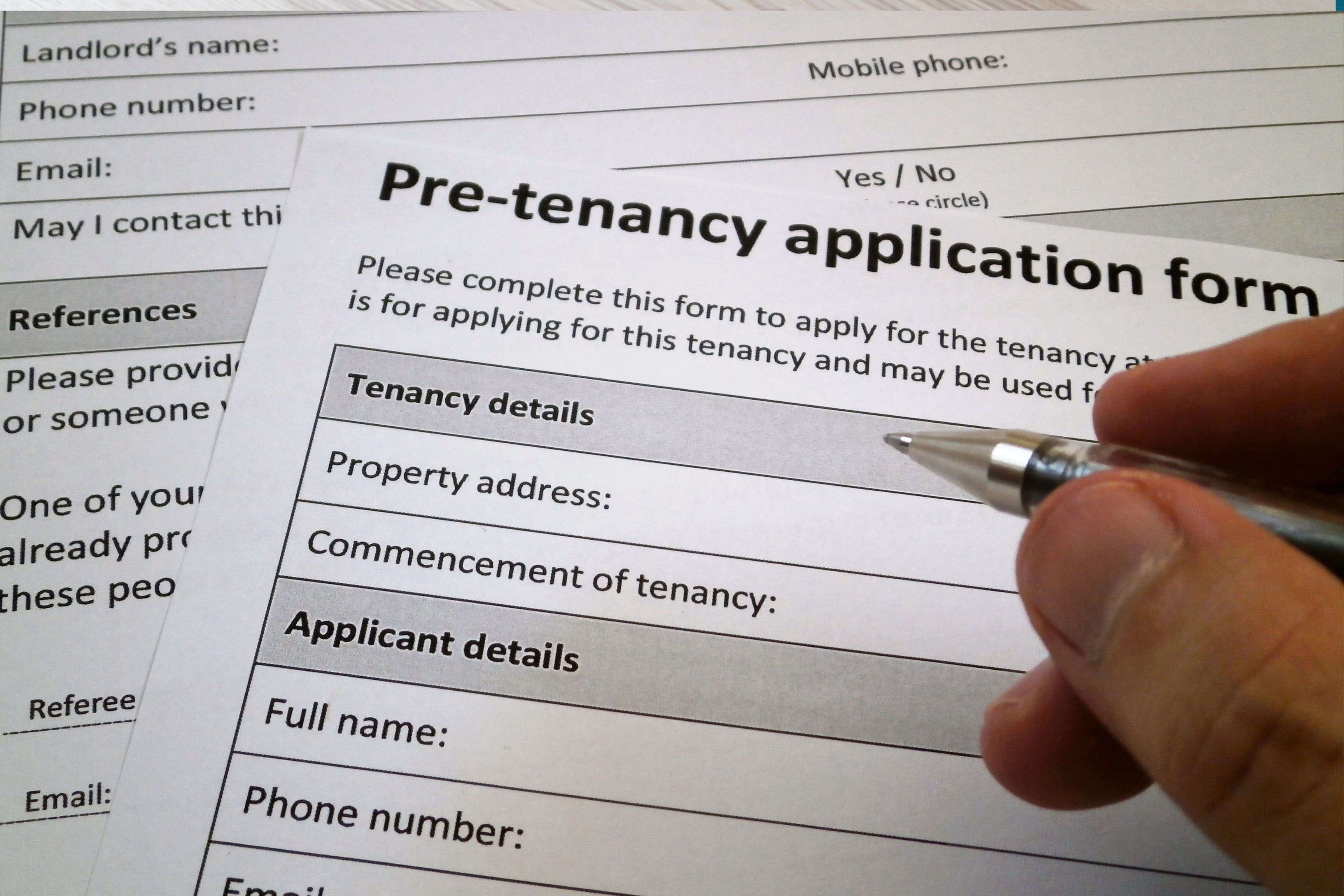5 Professional Tenants Tactics (and How to Avoid Them)

Professional tenants are a landlord’s worst nightmare, the ones you read about in the newspaper. These individuals are notorious for cheating the system and using loopholes, leaving landlords with lost rental income, a damaged property, and a huge headache. They will complain about the smallest of messes and become the largest hassles.
In order to get away with such actions, professional tenants have created some pretty elaborate strategies. Here are the top 5 tactics from professional tenants. If you find your tenant is doing any of the below, then you may have a professional tenant.
Tactic #1: Paying partial rent
Often times, professional tenants will pay only a portion of the rent each month. When a landlord has accepted partial rent one month, then State laws will not allow an eviction for that month. This provides the tenant with more time in the property with overdue rent, and most often, they’ll continue to delay each month. Before the landlord realizes it, the tenant is close to lease expiration with an exorbitant number of past due payments. Don’t accept partial payments and require full amounts on exact dates to avoid these schemes. If a tenant is late, be prepared to start the eviction process right away. Also, never accept partial rent.
Tactic #2: Paying rent before the late fee
Professional tenants understand a landlord is more likely to take legal action for $1,000 of past due rent than for a $50 late fee. These tenants will pay rent before the late fee, claiming the late fee will be paid soon. Guess what? By accepting the rent before the late fee, the landlord is most likely never going to receive the late fee. The landlord becomes emotionally drained as a debt collector and just writes off the late fee.
The lease contract is written to align incentives between the tenant and landlord. A late fee is listed in the contract to set the precedent that rent should not be paid past a certain date. Tenants should not take advantage of the payment terms in the contract. By waiving this fee, a landlord signals that the legally binding contract is “flexible,” and it provides professional tenants with the signal that they may be able to bend other terms in the contract. Don’t become drained emotionally and only accept rent after outstanding late fees are paid.
Tactic #3: Paying in cash
Cash is impossible to track, making it the preferred medium for professional tenant payments. These professional tenants will lie about making cash payments or even go as far as faking rent receipts. As a landlord, avoid taking cash payments that foster these types of actions. When a landlord is in the courtroom, they want to show a track record of traceable payments followed by no payments. Keep in mind that in some states, landlords are not allowed to refuse cash. If a tenant insist on paying cash, you must create and BOTH sign a receipt at the time the cash is accepted.
Tactic #4: Asking for time
Some tenants will approach their landlord and plead for more time to pay rent. This tactic is usually accompanied by a heart-tugging story of the hardships they are currently battling that prevents them from paying. Unfortunately, it is difficult for a landlord to know the legitimacy of these stories and a tough decision must be made. Allowing for a longer payment period will only make things worse. While it might be emotionally difficult to draw a line, a landlord is not a bank that provides loans. When a tenant is late on rent, they should go to their friends, family, bank, or another source for a personal loan. The relationship between tenants and landlords should be strictly professional and real estate related. If a tenant still cannot pay the rent when it is past due, then the next step is an eviction notice. A landlord may want to consider suggesting to the tenant that if they are late on rent, then they will release the tenant from their lease so the tenant can find a more affordable unit. It may be easier for a landlord in the long run to let a tenant who can’t afford rent to leave then to constantly chase the tenant for rent.
Tactic #5: Claiming the rental is uninhabitable
Professional tenants may try to claim the rental is uninhabitable as a scheme to not pay rent. Typically, their process is submitting a maintenance request and claiming it was never addressed. They will withhold rent or break the lease and reference the clause on maintenance and habitability of the property. Every maintenance request should be tracked in a system, providing evidence that the request has been acknowledged and updates have been provided in a timely manner. This type of documentation will save a landlord in the courtroom. While landlords have no power over the judge, maintaining records and photos of your properties can protect yourself from these situations.
When a tenant makes a claim that the property is unfit to live in, landlords must refile with proof of a habitable environment. Tenants will then proceed to trash the property in an attempt to justify their claim. Keeping a running log of property conditions and pictures help prove your case. And, do not forget that tenant damage, beyond normal wear and tear, can be charged back to the tenant. If they are intentionally causing damage to create an “uninhabitable claim,” documentation will help to bring justice in the case.
Looking for the next level of landlord software before handing off to a property manager?
Hemlane is a software that is built to grow with your needs as a landlord.
For a minimal amount, there’s a really good basic package but what we love is the option to upgrade and add 24/7 maintenance management on.
Hemlane offers complete financial support as well. You can link multiple bank accounts for direct deposit rent payments, add automatic late fees, sends reminder notifications to your tenants, and has a detailed profit and loss statement that can includes automatic and manual uploads of income and expenses.
It gets better! If you reach a place where you are ready to hand off management to a property manager, Hemlane has that too under their “Complete” option.
You can try Hemlane out FREE for 14 days (no credit card required) to see if its a good fit for you!
How to spot professional tenants
Professional tenants are just as good at hiding their identity as they are at evading rent, and thus spotting a professional tenant can be difficult. There are some warning signs however that can help you avoid renting to professional tenants. Be on the lookout for tenants with an eviction history, run ins with the law, or troubles with previous landlords. In addition, professional tenants will ask if the property is “professionally managed” during the initial inquiries as a way to find inexperienced landlords.
How to avoid a professional tenant
Screening is a critical aspect for a property management company that helps prevent renting to professional tenants. While there are various third-party methods for screening tenants, screening tenants yourself is the only guarantee. Items such as reference checks can be faked and false information easily provided. Here are a few simple steps to take for screening tenants:
- Have tenants provide a copy of official ID (like driver’s license), if they refuse, they are likely hiding something
- Verify employment history to ensure ability to pay
- Perform comprehensive screening, from credit to eviction history
- Call past landlords and any references listed to assure legitimacy
- Keep a record of your property conditions and tenant interactions
For all reference checking, it’s crucial that you know the sources are legitimate and not fake. Some helpful tips to easily authorize a source:
- If you are contacting an employer, call their main office line listed on a website (not a cell phone). If this is not available, ask them to send you an email from their company email to provide simple proof they still work there.
- If you are calling past landlords, ask questions such as “can you confirm how much the tenant is paying in rent?” It will help confirm that they actually own the property and are not a friend.
- Keep in mind, current landlords may be incentivized to get the tenant to move out (because they can’t pay rent, are causing troubles, etc.) and are thus more likely to persuade you the applicant is a good potential tenant. Prior landlords (from two to three years ago) may be more truthful since they are not currently in a lease with the tenant.
- Don’t forget to reference check ALL adults who will be living in the unit, not just the main contact.
- Even though this process may seem arduous and excessive, remember that a bad tenant can result in 10x more work and therefore it’s worth the upfront work to avoid all of this.
We hope you have found this article helpful to avoid the world’s worst tenants. If you are interested in setting up a more professional appearance to tenants, then try Hemlane for free.
Did you enjoy this article?
This is an example of what is included on our FREE weekly newsletter, Landlord Weekly.
Subscribers get access to our free forms, email templates, and guides! As well as…
▪️Landlord Tips ▪️ Early Access to Our Blogs ▪️ Landlord Specific Articles by Other Industry Pro’s ▪️ Podcast Links
To check out a sample of our newsletter, click one of the links below👇
Related Posts
Warren Buffett Is Wrong: Diversification Isn’t Just for Ignorant Investors
Should you aim for diversification in your real estate investments? What about your stock investments…
May 7, 2024Solved! Should I Get a Home Warranty for a Rental Property?
By Meghan Wentland Because your primary expense on rental properties will be maintenance and repairs…
May 7, 2024




Leave A Comment